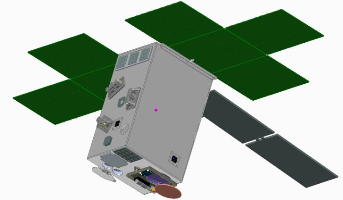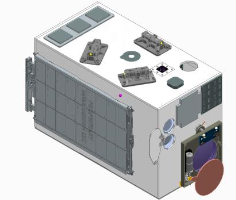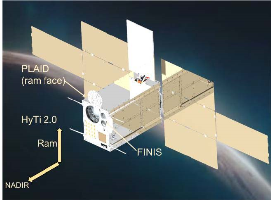| Spacecraft name | ACMES (Active Cooling for Multispectral Earth Sensors) |
|---|---|
| Form factor | CubeSat |
| Units or mass | 16U |
| Status | not launched, expected in 2025 |
| Launcher | not launched |
| Entity name | Utah State University |
| Institution | University |
| Entity | Academic / Education |
| Nation | US |
| Manufacturer | AIVT by Orion Space Solutions |
| Operator | In-house? |
| Oneliner |
Validate Active Thermal Architectures (ATA) and the HyTI (Hyperspectral Thermal Imager). |
| Description |
The Active Cooling for Multispectral Earth Sensors (ACMES) mission is to simultaneously validate two new technologies, each representing an important advance in satellite remote sensing capability for Earth science. The first technology is the Active Thermal Architectures (ATA) and the second technology is the HyTI (Hyperspectral Thermal Imager). ACMES includes two student technology demonstrations, the Filter Incidence Narrowband Infrared Spectrometer (FINIS) and the Planer Langmuir/Impedance Diagnostic (PLAID). The first technology to be validated by the ACMES mission is our Active Thermal Architectures (ATA), a complete end-to-end solution for active thermal control of cryogenic instruments on nano and small satellites. ATA consists of a two-stage cooling system with an integrated miniature tactical cryocooler forming the first stage and a micro-pumped fluid loop forming the second. Fluid is pumped between an internal heat exchanger and a radiator through a two-axis flexible rotary fluid joint. The radiator is deployed after launch and single-axis steering allows it to avoid direct solar illumination. This steerable functionality provides a 70% savings in radiator size for a given heat rejection capability. Realizing ATA was made possible through an advance 3D manufacturing process ultrasonic additive manufacturing (UAM). Using UAM, we embed the working fluid channels directly into the heat exchanger in the satellite bus, resulting in a smaller system with better thermal performance. The second technology to be validated is the Filter Incidence Narrow-band Infrared Spectrometer (FINIS), a sensor designed for space-based detection of methane sources. FINIS uses the differential absorption technique to achieve sensitivity equivalent to larger missions such as TROPOMI, but with a much finer spatial resolution and in a compact form factor suitable for a CubeSat. FINIS uses a tilted interference filter to develop the spectrum of the methane absorption feature at 1.666 μm, but the design can be modified to other spectral regions for other target gases. Absolute radiometric calibration is not necessary–only camera flat-fielding, thereby reducing both development costs and risk on orbit. Operationally, we propose to use FINIS’ fine spatial resolution to pinpoint and quantify localized methane sources, guided to specific regions of interest by TROPOMI observations. ATA and FINIS are each currently at TRL 6 and 5+, respectively. By demonstrating them on ACMES we will raise the TRL of both systems to 7. It is important to note that each is an independent technology — FINIS can meet requirements without ATA, and ATA can operate and be validated alone, but the combination enables greater operational capability for FINIS and demonstrates a realistic and practical implementation of ATA to cool a miniature electro-optical sensor on a CubeSat bus. Thus, the ACMES mission will demonstrate and validate two significant technological innovations for the next generation of space-based Earth science observations. |
| Notes |
The size on latest pictures is 16U. Deployed from a ring system and pushing the CubeSat specification criteria. |
| Sources | [1] [2] [3] [4] [5] [6] [7] [8] |
| Photo sources | [1] [2] [3] [4] [5] |
| COTS subsystems |
|
| Keywords | Globalstar or Iridium or Inmarsat |
Last modified: 2024-08-27






